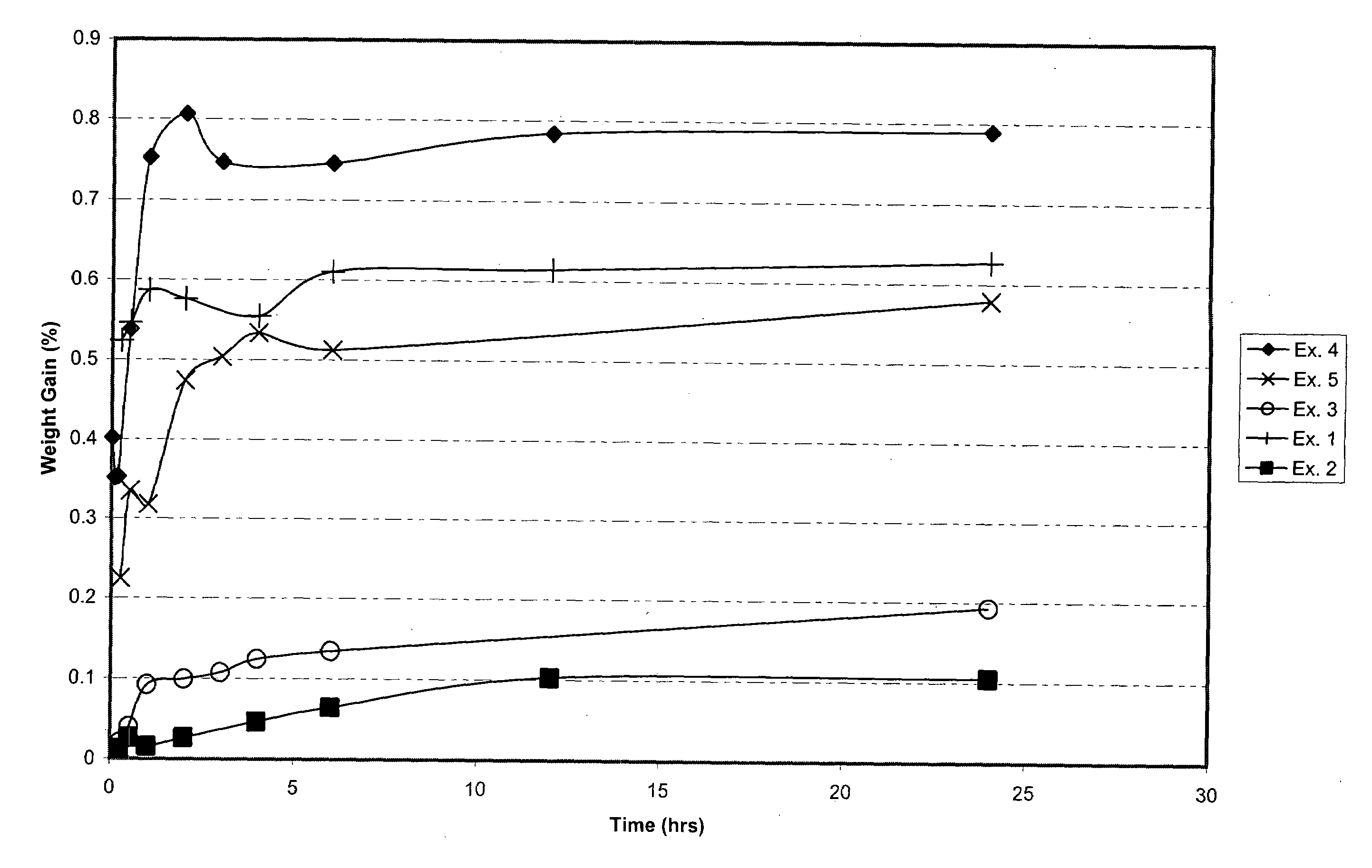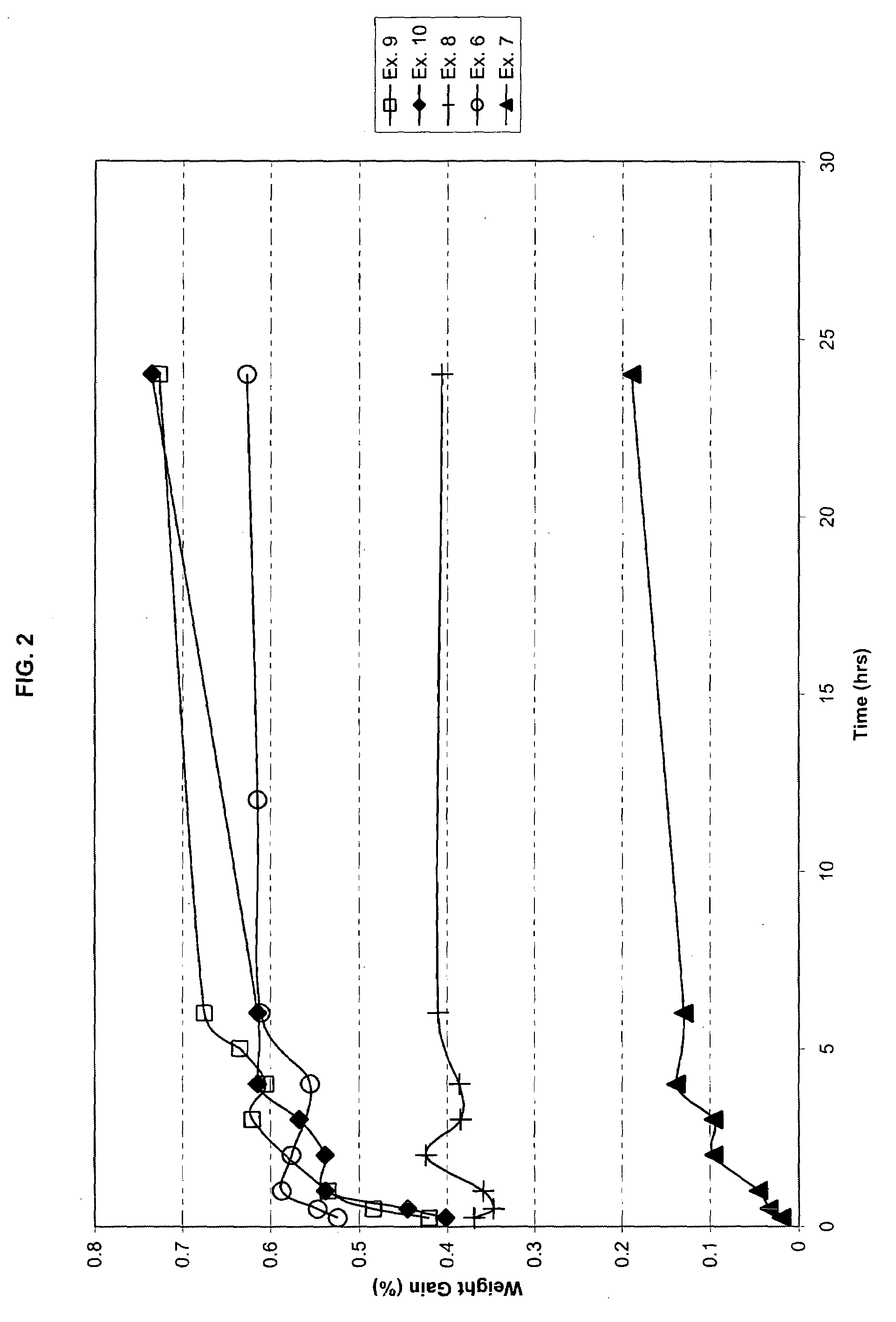Flexible ballistic composites resistant to liquid pick-up method for manufacture and articles made therefrom
a technology liquid pick-up methods, which is applied in the field of flexible ballistic composites, can solve the problems of less than desired resistance to water and other liquid pick-up, rigid body armor garments (e.g. vests) are usually less comfortable to wear than flexible body armor garments, and the rigidity of rigid body armor garments is not easy to maintain. achieve the effect of improving the resistance to liquid pick-up, and desirable ball
- Summary
- Abstract
- Description
- Claims
- Application Information
AI Technical Summary
Benefits of technology
Problems solved by technology
Method used
Image
Examples
example 1
[0054]A four-ply non-woven composite was formed from layers of aramid fiber (Twaron® T2000 from Teijin, having a denier of 1000 and a tenacity of 26 g / d). Unitapes of aramid fibers were prepared by passing the fibers from a creel and through a combing station to form a unidirectional network. The fiber network was then placed on a carrier web and the matrix resin is coated thereon. The matrix resin was a dispersion of a thermoplastic polyurethane resin (described by its manufacturer as being a copolymer mix of polyurethane resins in water (40-60% resin), having a relative density of 1.05 g / cc at 23° C. and a viscosity of 40 cps at 23° C.). The coated fiber network was then passed through an oven to evaporate the water in the composition and was wound up on a roller, with the carrier web stripped therefrom, in preparation for forming the composite material. The resulting structure contained 16 weight percent of the polyurethane resin. Two continuous rolls of unidirectional fiber prep...
example 2
[0057]Example 1 was repeated, except that each two-ply aramid composite was first formed with a 0.35 mil (8.89 μm) linear low density polyethylene (LLDPE) film on one surface. Two of these composites were consolidated in a press, with the aramid layers facing each other. The result was a 4-ply aramid structure with polyethylene films on each outer surface.
[0058]The water resistance of this four-ply composite was tested as in Example 1, and the results are also shown in FIG. 1 (as curve labeled Ex. 2).
[0059]It can be seen that the weight gain for this structure is very minimal, being about 10% after 24 hours. In addition, the weight gain levels off after about 12 hours.
example 3
[0060]Example 1 was repeated using only the two ply unitape of aramid fibers.
[0061]The water resistance of the two-ply composite was tested as in Example 1, and the results are also shown in FIG. 1 (as curve labeled Ex. 3).
[0062]It can be seen that the weight gain for this structure is very minimal, with a weight gain after 24 hours of about 20%.
PUM
| Property | Measurement | Unit |
|---|---|---|
| Temperature | aaaaa | aaaaa |
| Temperature | aaaaa | aaaaa |
| Fraction | aaaaa | aaaaa |
Abstract
Description
Claims
Application Information
 Login to View More
Login to View More - R&D
- Intellectual Property
- Life Sciences
- Materials
- Tech Scout
- Unparalleled Data Quality
- Higher Quality Content
- 60% Fewer Hallucinations
Browse by: Latest US Patents, China's latest patents, Technical Efficacy Thesaurus, Application Domain, Technology Topic, Popular Technical Reports.
© 2025 PatSnap. All rights reserved.Legal|Privacy policy|Modern Slavery Act Transparency Statement|Sitemap|About US| Contact US: help@patsnap.com



